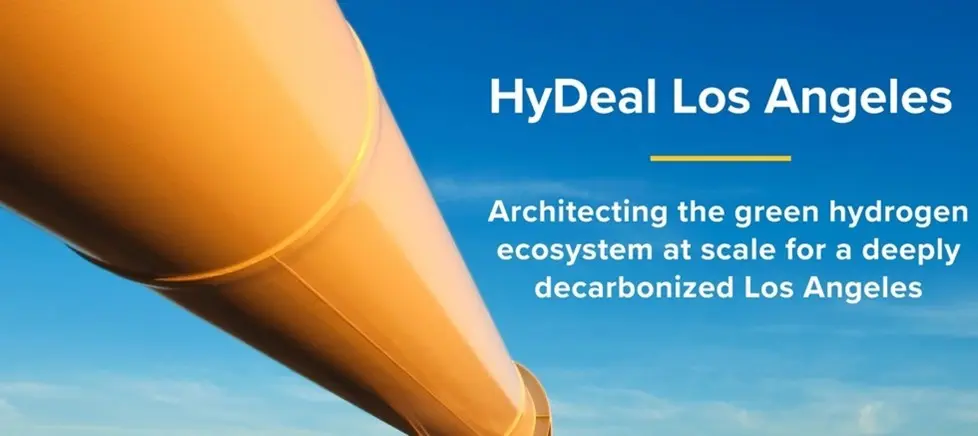Technology
No longer hype: green hydrogen is real (Part 2)
Feb 14, 2022
As my first piece provided historical and current context of green hydrogen application, I’ll now delve into exactly how hydrogen acts as a medium for energy storage.

Hydrogen energy storage – a key enabler for the 100% renewable grid
We make renewable power while the sun shines and when the wind blows. In a 100% renewable energy grid, we must expect to produce energy when we can, and store it so we can deliver it when it’s needed. Solar energy production happens in the daytime, of course, so we need to store energy to use at night – what we call daily-cycling storage. But solar energy production also varies by season, so we need to store large amounts of energy from the summer, to use during the winter – which we call seasonal, or long-term storage.
For daily-cycling storage, we can store energy in large lithium-ion batteries, charging them by day when the sun is up, and using them for power at night (I’m simplifying greatly: in practice it’s rather more complicated than that). This works very well: in fact, most new 8minute solar power plants incorporate battery storage.
But hydrogen can play a crucial role in changing the economics of long-term storage. Green hydrogen is made from renewable electricity and water. That hydrogen, fed to a combined cycle gas turbine or to a fuel cell, produces water and electricity. In effect, green hydrogen can store renewable energy. And very large amounts of green hydrogen can be stored in subterranean caverns for a long time, at low cost.
A single salt cavern can hold several thousand tonnes of hydrogen. A single tonne of hydrogen can produce roughly 20 MWh of electricity. So, one cavern can run a 100 MW gas-fired powerplant, not just for hours, but for weeks at a time. This is why hydrogen matters for the 100% renewable grid: it could be one of the cheapest means to store the very large amounts of energy needed to cover seasonal variations in renewable energy production.
Unlike other forms of energy storage, green hydrogen may be stored either where it is produced or in a separate location and then converted back into electrical power – or used as an industrial feedstock – in still another. To build the ecosystem to support this is no simple feat: it requires hydrogen transportation systems, hydrogen storage systems, and hydrogen production systems (electrolyzers), all at low cost.
To drive these costs down, we need innovative initiatives that bring together various stakeholders who can take on these cutting-edge projects and build the infrastructure needed, and that is where we at 8minute step in.

8minute Solar Energy’s hydrogen activities: bottled sunshine
We are already moving to contribute to green hydrogen production. 8minute is a platinum member of the California Hydrogen Business Council, working to help the state achieve its decarbonization goals through the commercialization of green hydrogen. We are also a proud member of the Green Hydrogen Coalition (GHC), where our CEO, Tom Buttgenbach, serves on the Leadership Committee. Through facilitating policies and practices, the nonprofit GHC is dedicated to advancing the production and use of green hydrogen to combat climate change.
And we are proud to be a part of GHC’s HyDeal North America initiative, unveiled in May 2021. Modeled after a similar project (called HyDeal Ambition) in Europe, HyDeal is the first of its kind in North America and aims to deliver green hydrogen at the price of $1.50/kg by 2030. The initiative’s inaugural city is Los Angeles, where in April Mayor Garcetti committed the city to reaching 100% renewable energy by 2035, accelerating the target by 10 years, relying in part on green hydrogen-fueled in-basin power plants.
Once fully realized, this groundbreaking initiative has the potential to serve as a blueprint for solving the green hydrogen’s “chicken-and-egg problem,” where the business case for each piece of infrastructure depends on the existence of the others. Participants – including government, regulators, and industry – will need to coordinate efforts to ensure that investments can be made productively, and this is where the GHC and the HyDeal initiative come in, to examine and evaluate challenges like how to further industrialize electrolyzers, to blend green hydrogen into existing gas lines, and to encourage the continued adoption of green hydrogen.
As awareness around green hydrogen production and its various applications continues to grow with help of initiatives like HyDeal North America, we’ll see a necessary spark of bold policy decisions. Ultimately, the faster our government and regulators spur investment and demand for green hydrogen, the quicker we’ll be able to scale it and fully expand on its potential.
In the meantime, 8minute is already investigating commercial opportunities to produce hydrogen for a range of possible applications in the Southwest. Taken together, these green hydrogen projects present a notable opportunity to update our electrical grid and help ensure reliability while getting to our zero-carbon goals.
The green hydrogen tipping point
Green hydrogen is inevitable: it’s needed to replace current uses of hydrogen derived from natural gas, for long-duration electricity storage, and for a variety of other applications from steel manufacturing to heat production. And right now, green hydrogen is at a tipping point.
Our businesses, government, and communities must decide how quickly to accelerate the development and deployment of this emerging solution. We at 8minute are proud to be at the forefront of innovation and part of the climate solution. Securing a zero-carbon, sustainable future for our planet and people is our number one priority. With green hydrogen looking like a key technology to enable that goal, we’re on it.

